The Streak Goes On…
After sleeping late to 4:00am we had a great day with the Whooper Swans.
This post marks 77 straight days with a new educational blog post, a record by far that should be extended for at least another day or so, or not. Or more…. It appears that our lodge has great internet. To show your appreciation for my efforts here, we ask that use our B&H and Amazon affiliate links for all of your B&H and Amazon purchases. Please check the availability of all photographic accessories in the BIRDS AS ART Online Store. We sell only what I use and depend on. We will not sell you junk. We know what you need to make creating great images easy and fun. And we are always glad to answer your gear questions via e-mail.
You can find the following items in the store: Gitzo tripods, Mongoose M3.6 and Wimberley heads, plates, low feet, and accessories, flash brackets, , Delkin e-film Pro Compact Flash Cards, LensCoat products, and our unique line-up of educational materials including ABP I & II, Digital Basics, Site and Set-up e-Guides, Canon and Nikon Camera Users and AF e-Guides, and MP-4 Photoshop video tutorials among others.
We would of course appreciate you using our B&H and Amazon affiliate links for all of your B&H and Amazon major gear, video, electronic, household, and personal purchases. For the photographic stuff mentioned in the paragraph above we would of course greatly appreciate your business. Here is a huge thank you to the many who have been using our links on a regular basis and visiting the BAA Online store as well.
Today’s blog post took 1 1/2 hours to prepare. It’s late: I gotta get up soon!
|
This White-tailed Sea Eagle flight image was created on the Japan in Winter IPT with the Canon EF 200-400mm f/4L IS USM Lens with Internal 1.4x Extender (hand held with the internal extender in place at 490mm) and the Canon EOS-1D X. ISO 400. Evaluative metering +1/3 stop: 1/2000 sec. at f/6.3 in Manual mode was an underexposure. AWB. Central Sensor/AI Servo-Surround/Rear Focus AF barely caught the tip of the bird’s bill and was active at the moment of exposure. Click here to see the latest version of the Rear Focus Tutorial. Click on the image to see a larger version.
|
The 200-400 with Internal 1.4X Extender and Friend Do Tobu Tori
As you can see with the three opening images here, the Canon 200-400mm with Internal TC is a killer hand held flight lens. On our first afternoon, it was a dead slaughter. The cranes are fed fish at the Akan Crane Center and a variety of raptors seemingly appear out of nowhere in an attempt to steal a free lunch. The more I use the 2-4 for hand held flight photography the easier the process becomes. The lens is so compact that it seems to weigh a lot less than it actually does. And the more you practice with the positioning of your hands on the lens the easier it becomes to zoom out when needed; note the 490mm focal length for the image above where I zoomed out from 560mm to better fit and place subject in the frame. And with the 1D X every image where I had the sensors anywhere near the bird’s head, face, or neck were razor sharp on the eye.
|
This Steller’s Sea Eagle flight image was created on the Japan in Winter IPT with the Canon EF 200-400mm f/4L IS USM Lens with Internal 1.4x Extender (hand held with the internal extender in place at 560mm) and the Canon EOS-1D X. ISO 400. Evaluative metering -1/3 stop: 1/3200 sec. at f/6.3 in Manual mode was an also an underexposure. AWB. Central Sensor/AI Servo-Surround/Rear Focus AF caught the bird’s head and was active at the moment of exposure. Click here to see the latest version of the Rear Focus Tutorial. Click on the image to see a larger version.
|
Steller’s Sea Eagle is not a common bird at the Akan Crane Center. On our first visit, there were two. We got more great news today, with the total absence of sea ice at Rausu until a few days ago, our 4 sea eagle flight photography sessions were in doubt. But with the current cold snap the eagle boats are now running again.
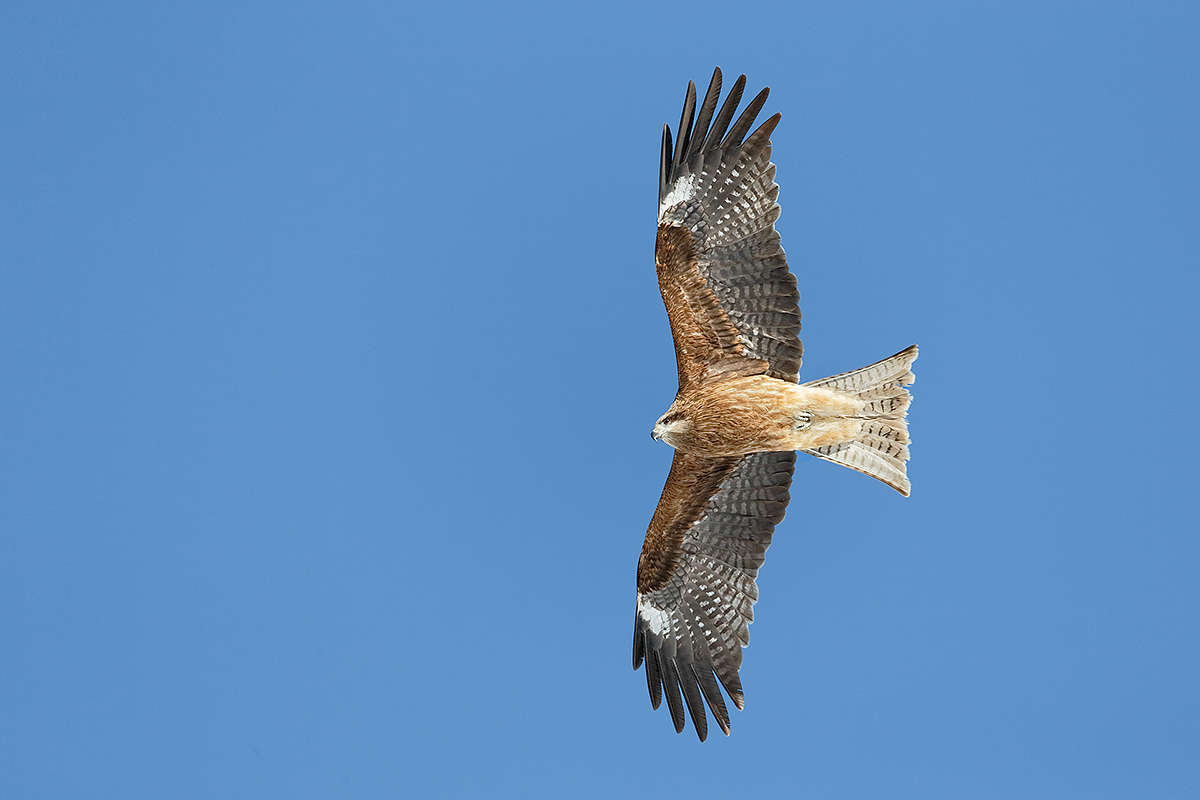
|
|
This Black-eared Kite flight image was also created on the Japan in Winter IPT with the Canon EF 200-400mm f/4L IS USM Lens with Internal 1.4x Extender (hand held with the internal extender in place at 560mm) and the Canon EOS-1D X. ISO 400. Evaluative metering at zero: 1/2000 sec. at f/6.3 in Manual mode was yet another underexposure. AWB. Central Sensor/AI Servo-Surround/Rear Focus AF just caught the bird’s bill and was active at the moment of exposure. Click here to see the latest version of the Rear Focus Tutorial. Click on the image to see a larger version.
|
Ah So….
Tobu Tori means “flying birds” in Japanese.
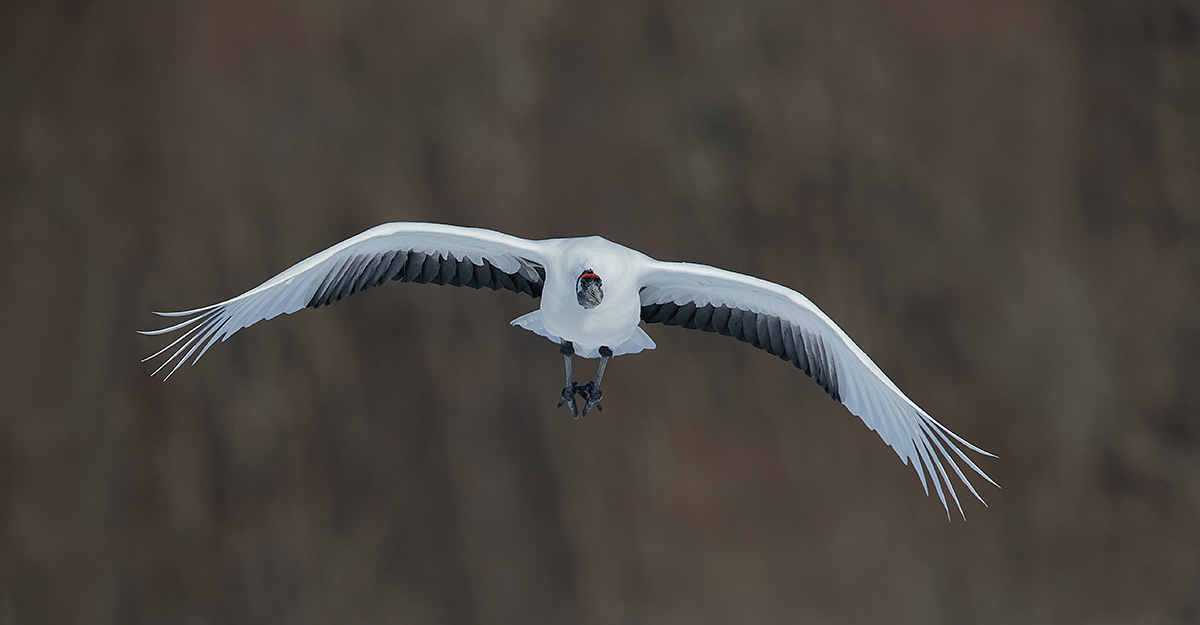
|
|
This Red-crowned Crane flight image was created on the Japan in Winter IPT with the Gitzo 3532 LS carbon fiber tripod, the Mongoose M3.6 head, the Canon EF 600mm f/4L IS II USM lens, the Canon 1.4x EF Extender III (Teleconverter), and the Canon EOS-1D X. ISO 400. Evaluative metering at zero: 1/3200 sec. at f/6.3 in Manual mode. Color temperature: AWB. Central sensor/AI Servo/Surround Rear Focus AF fell squarely on the bird’s face and was active at the moment of exposure. Click here to see the latest version of the Rear Focus Tutorial. Click on the image to see a larger version.
|
The 600 II and the 1.4X III TC
Once I saw that all of the feeding action was over I noted that despite the poor wind conditions for flight: wind against sun, that some of the cranes were leaving to our right with the beautiful distant trees as a backdrop. The birds were at quite a distance away so I reached for my 600II/1.4X III/1D X combo and went to work.
You Favorite
Take a moment to leave a comment and let us know which of the four images was your favorite, and why.
A Creative Adventure/BIRDS AS ART Instructional Photo-Tours (IPTs)/Two great leaders: Arthur Morris & Denise Ippolito.
Arthur Morris/BIRDS AS ART www.BIRDSASART-blog.com for the latest images, info, & education
Denise Ippolito/A Creative Adventure www.deniseippolito.com: get yourself out of the box!
Denise’s e-books: Bloomin’ Ideas, A Guide to Filters & Effects, The Softer Side of Macro, & more. Free Monthly Creative MiniMag: www.deniseippolito.com/magazine
Nickerson Baby Beach-nesting Birds IPT, Long Island, NY: 3-Full Days/July 22-24, 2014: $1199.
Black Skimmers, Common Terns with chicks, American Oystercatcher & Piping Plover families; breeding behaviors including courtship feeding, display flight and combat, and copulations. Gulls and shorebirds.
UK Puffins IPT. Early July, 2014.
Details TBA. Please e-mail to be placed on the interested list.
Tanzania Serengeti Summer Safari: Leave US: August 9—return: August 24, 2014: $12,999.
Co-leaders: Arthur Morris & Todd Gustafson. Wildebeest/The Great Migration, cats, elephant, giraffe, zebra, birds & more. Please e-mail for brochure.
Swan Island Dahlia Farm IPT, Canby, OR, September 8-12, 2014: 5 FULL DAYS: $1699.
Leader: Denise Ippolito. 40 acres with 350+dazzling varieties of dahlias in a plethora of colors, shapes and sizes. Sharpen your technical skills and boost your creative juices. Daily assignments, image sharing, and Photoshop sessions.
Bosque del Apache 2014 A Creative Adventure/BIRDS AS ART “Creative Photography Instructional Photo-Tour.” (IPT). NOV 24-25, 2014. 2-FULL DAYS: $729.
Leaders: Denise Ippolito & Arthur Morris. Introductory Slide program: 7:00pm on Sunday 11/23. This IPT is perfect for folks who want to learn to think outside the box, to create new and different images. Learn to unleash your creative juices at the wondrous Bosque del Apache, NWR in San Antonio, NM.
Bosque del Apache 2014 BIRDS AS ART/A Creative Adventure Instructional Photo-Tour (IPT). NOV 29-DEC 3, 2014. Totaling 4 FULL-DAYS: $1449
Leaders: Arthur Morris and Denise Ippolito. Introductory Slide program: 7:00pm on Sunday 11/29. Tens of thousand of Snow Geese, 10,000 Sandhill Cranes, ducks, amazing sunrises, sunsets, and blast-offs. Live, eat, and breathe photography with two of the world’s premier photographic educators at one of their very favorite photography locations on the planet.
Antarctica/The Extended Expedition Voyage: Antarctic Peninsula, South Georgia and Falkland Islands: December 13, 2014 to January 10, 2015.
Please e-mail for details.
BAA offers a wide range of books, e-Guides, and educational materials and photographic accessories at the lowest prices around—25+ years of experience, and the best advice you can get. We will not sell you junk. Access the BAA Store here or call us at 1-863-692-0906.
Questions? Please e-mail us at birdsasart@verizon.net or photographybydenise221@gmail.com.
Support the BAA Blog. Support the BAA Bulletins: Shop B&H here!
We want and need to keep providing you with the latest free information, photography and Photoshop lessons, and all manner of related information. Show your appreciation by making your purchases immediately after clicking on any of our B&H or Amazon Affiliate links in this blog post. Remember, B&H ain’t just photography!




Amazon
Everyone buys something from Amazon, be it a big lens or deodorant. Support the blog by starting your search by clicking on the logo-link below. No purchase is too small to be appreciated; they all add up. Why make it a habit? Because I make it a habit of bringing you new images and information on an almost daily basis.
Typos
In all blog posts and Bulletins, feel free to e-mail or to leave a comment regarding any typos, wrong words, misspellings, omissions, or grammatical errors. Just be right. 🙂
IPT Info
Many of our great trips are filling up. See especially info on the Holland, Nickerson Beach, and Bosque IPTs. Two great leaders on most trips ensure that you will receive individual attention, have all of your questions answered, and learn a ton including how to think like a pro, see the situation, and get the right exposure every time. In addition you will have fun, and make lots of great images. Click here for IPT details and general information.

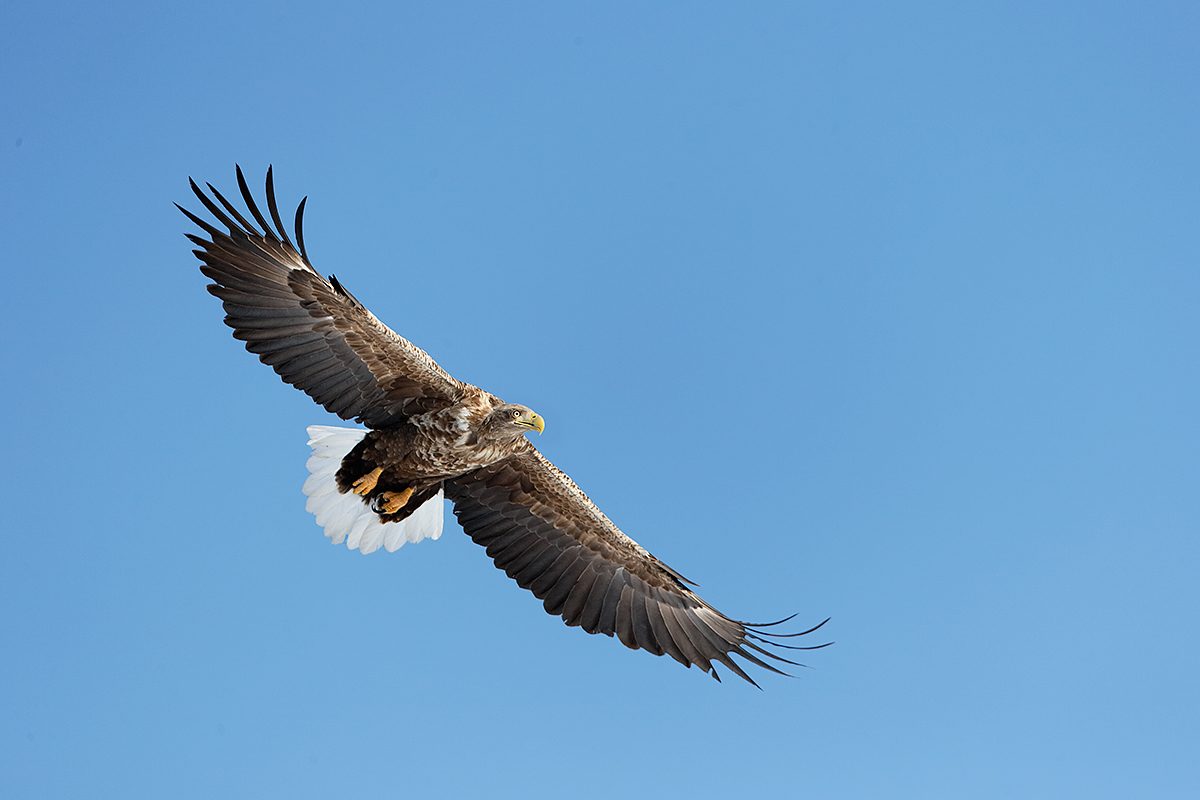
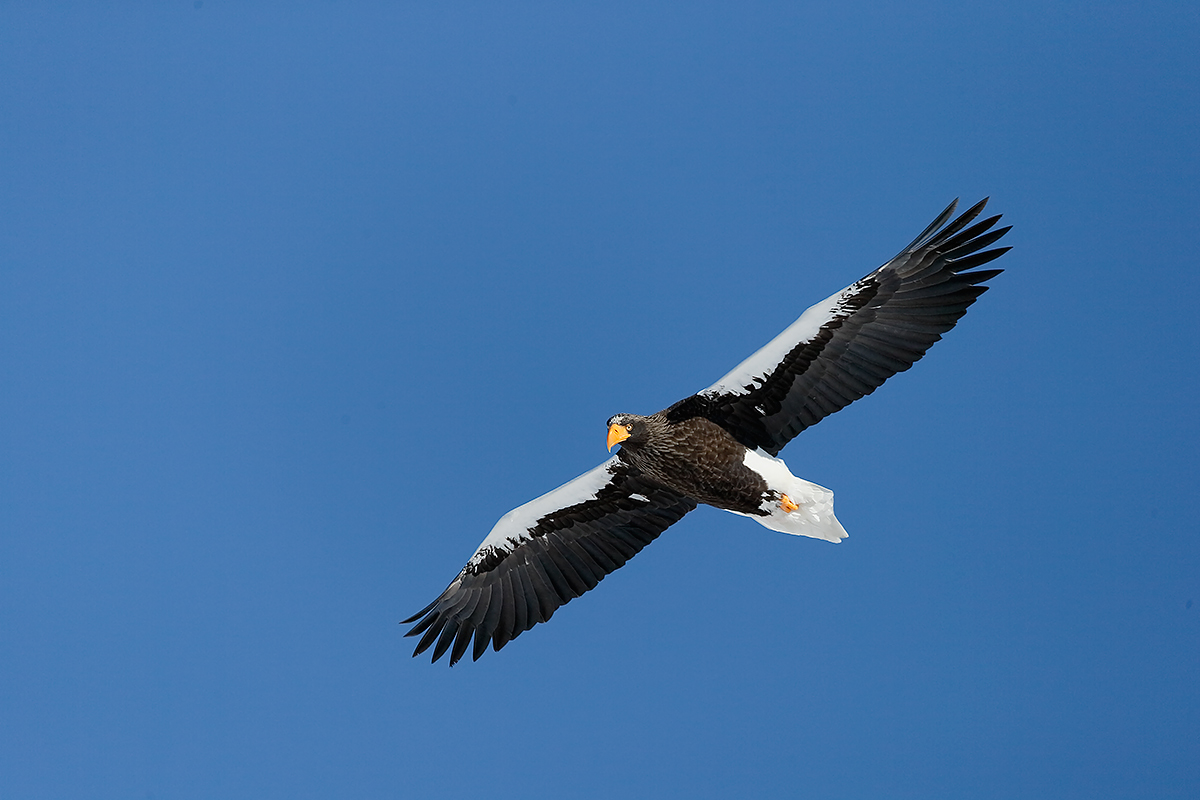
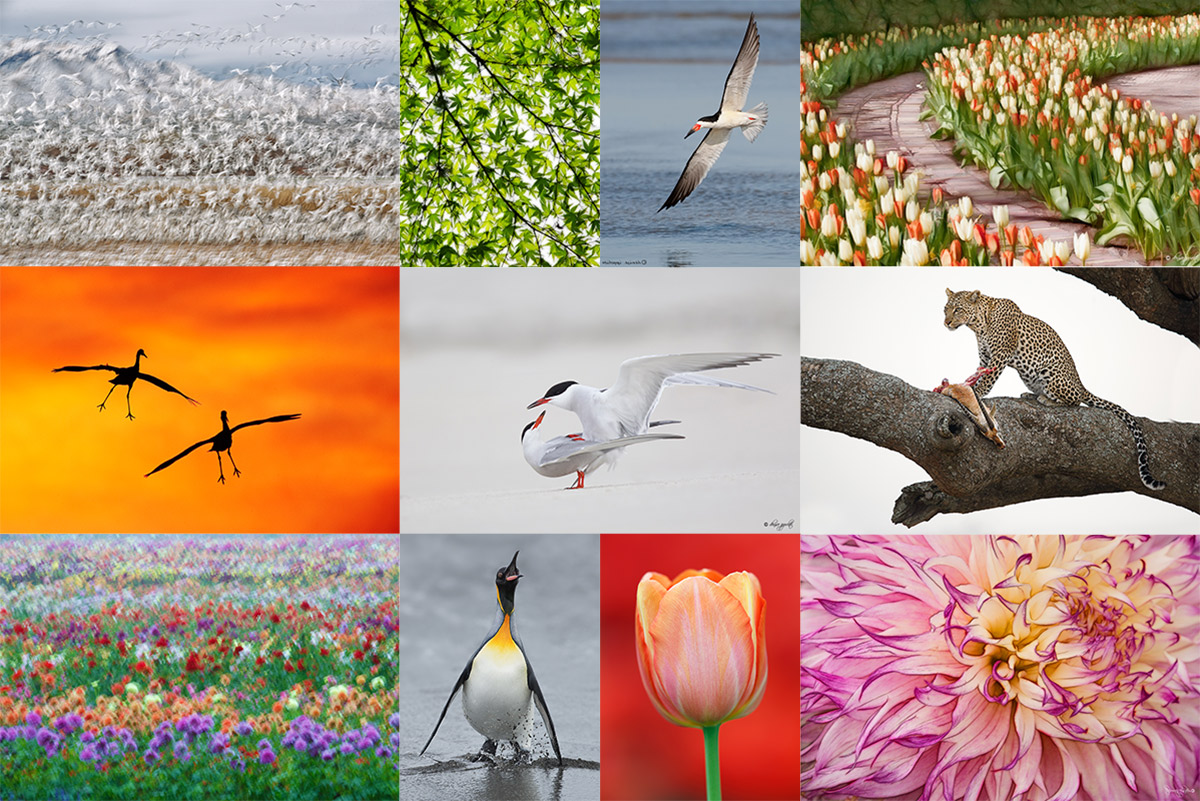















Good morning Artie. Hope all of you are fine.
Recently a friend of mine claimed that if a telephoto lens is used with extenders; one will have fewer keepers when shot in burst.
May I know your take on this?
Thanks in advance.
Quazi
Hi Quazi,
That sounds nuts to me…. artie
Great. Now I can go ahead with my plans.
Thanks again boss.
Quazi
YAW. Great. Where do you live? artie
In Dhaka, Bangladesh. A layman nature photographer and your devoted fan.
Regards.
Quazi
Thanks and :). Do you ever order from B&H or Amazon do you get your stuff locally? artie
Were these birds also lit by light reflected up from snow?
Yes. There is always snow on the ground at Akan Crane Center.
yesterday was a wet snowy day in Kyoto, so when you come here bring some warm clothes but not as warm as you need for where you are now. I guess I simply have to build up some experience with the 200-400. Chickened out and will be using the 300 f2.8. Good news about the boats. I like the first photograph the best but it is mainly because of the birds position in the frame.
Chickened out of buying it or using it??? artie
Thanks Doug and Harvey 🙂 artie
Really nice photos. I can’t choose between the three raptor shots for my favorite. Since I’ve been trying recently to improve my flight photography I’m even more impressed than usual. It’s not nearly as easy as you make it look to get the light and positioning and composition and sharp focus right!
Either that or maybe you’re a bird whisperer and when they see you the birds all just fly right at you to give you perfect shots. 🙂
Actually it is just a matter of understanding the direction of the wind, the light, and bird behavior. As I think I mentioned above, we had pretty much the worst possible flight conditions: fairly bright sun with the wind pretty much in our face though a bit from north. I instructed the group to watch for birds turning and circling to get in on the action and for birds flying the wrong way for whatever reason. After that it is just a matter or pressing the shutter button when the bird is in the zone: coming towards you (and the light)or at least not flying away and filling a suitable amount of the frame. Strength–which I do not have much of, and hand-eye coordination are also major factors but they are trumped by understanding the situation and knowing bird behavior and understanding how the direction of the wind and the direction of the light affect the photography of tobu tori….
Best way to learn all of this stuff: join us on an IPT that features lots of flight photography like this one:
Bosque del Apache 2014 BIRDS AS ART/A Creative Adventure Instructional Photo-Tour (IPT). NOV 29-DEC 3, 2014. Totaling 4 FULL-DAYS: $1449. Leaders: Arthur Morris and Denise Ippolito. Introductory Slide program: 7:00pm on Sunday 11/29.
Tens of thousand of Snow Geese, 10,000 Sandhill Cranes, ducks, amazing sunrises, sunsets, and blast-offs. Live, eat, and breathe photography with two of the world’s premier photographic educators at one of their very favorite photography locations on the planet. Top-notch in-the-field and Photoshop instruction. This will make 21 consecutive Novembers at Bosque for artie. This will be denise’s 6th workshop at the refuge. Nobody knows the place better than artie does. Join us to learn to think like a pro, to recognize situations and to anticipate them based on the weather, especially the sky conditions, the light, and the wind direction. Every time we make a move we will let you know why. When you head home being able to apply what you’ve learned on your home turf will prove to be invaluable.
Learn more by scrolling down here.
My Favorite:
Image #4 Red-crowned Crane
The beautiful leathered coloured background with the colours of the bird against it, puts it over the top for me.
Thanks Ted. artie
Some stunning images. Thanks for posting.
Could you please explain ‘at f/6.3 in Manual mode was an underexposure?’
Thanks in advance.
Quazi
It was an underexposure because–after the fact, the histogram was much too far to the left. It was a difficult situation and the action was fast paced. Different settings were required for the various species as they were all of different tonalities…. With their bright whties sunlit the cranes and the Steller’s Sea-Eagles required the least light, the white-tailed needed a bit more light as the white tail is not as bright at the whites on the two previous birds, and the black-eared needed a third stop more light.
I began by over-estimating the amount of light and compounded my errors from there until I finally got it right for the crane.
As always, learn everything that you need to know about exposure for nature photography in the two-book bundle: ABP and ABP II.
Thank you Artie. It’s clear to me now.
You are most welcome Quazi. Thanks for your excellent question. I hope that you saw the next blog post :). artie
I cannot choose one. I have to believe that you would get great captures with a $200 lens.
thanks for the show.
Tough to pick one…but if I had to, it would be #3.
Why? There’s something about how the wing span is almost
a straight line, top to bottom and a straight line from
the head to the tail, with the tail perfectly spread
open.
Doug